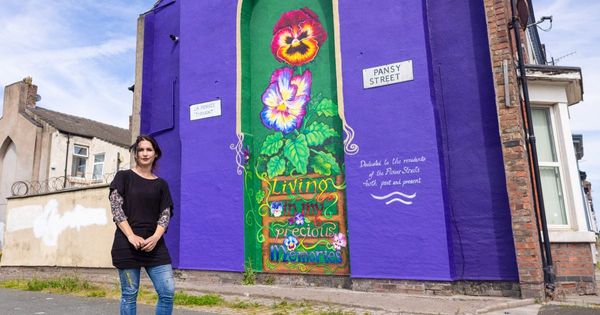
Love, death, marriage and power haunt the single, darkened room where this exhibition invites you to contemplate people who lived half a thousand years ago. How much can you read in their faces, their touching hands? In Hans Burgkmair the Elder’s Marriage Portrait of Jakob Fugger and Sybilla Arzt, painted in 1498, this Augsburg banker and his wife stand with pinched formality, but he puts a hand round her arm. A possessive gesture or a tender one? Burgkmair leaves us to guess.
Jacob was a rich Fugger, the head of Germany’s leading commercial family. He and Sybilla could afford to join the European elite captured in this show, which spans the rulers and super-rich of a continent and follows their marital intrigues. The higher up you went in the sociopolitical stratosphere, the more hung on who you got hitched to. A tiny painting by Corneille de Lyon depicts Madeleine, fifth child of Francis I of France: such paintings of young women were adverts to attract princely husbands, but the artist is honest enough to show Madeleine as frail and unhealthy. In spite of that, and against the rules of arranged marriage, James V of Scotland seems to have fallen for her sincerely, severing his previous engagement and getting wed in Notre-Dame. She died just a couple of months after he got her home to Edinburgh.

Painted Love offers itself as a simple survey of how portraiture was used in Renaissance Europe to advertise potential mates and celebrate marriages. But its real, more tantalising theme is the emotional lives those portraits may reveal. It is appropriately tentative. The lives of these people are shadows in time, whispers from a lost world. There are no crass characterisations, conclusions or rushed judgments here – rather a gentle interrogation of these ghosts.
If the portrait of Madeleine of France is a delicate token, love’s portraits got even more tiny and intense in Tudor England. Hans Holbein was a pioneer of the miniature, a pocket-sized portrait, minute enough to carry an image of your lover on your person. His little circular portrait of Mrs Jane Small, done in about 1540, shows her patiently posing, eyes down, a red carnation round her neck.
This intense, almost occult shrinking of Jane Small is a rarity in more ways than one. She was not a member of one of Europe’s great families like other people here but the wife of a London merchant who happened to live near Holbein. This artist left his own family in Basel when he came to London to make a living at Henry VIII’s court. He seems to have died alone of plague in London – no one bothered to give him a marked grave – so it’s comforting to picture him sitting in his neighbour’s garden, sketching Jane to mark her betrothal.
Another woman who was to be portrayed by Holbein appears here as a toddler. Jan Gossaert’s The Three Children of Christian II of Denmark shows young children with pungently characterful, comically chubby faces: ordinary kids who will one day be beautified for the marriage market. The monkey-like three-year- old at the right of the group is Christina, who would later be sought as a wife by Henry VIII of England, when she was still just 16 and already a widow. Henry sent Holbein to portray her, smiling enigmatically in a painting that’s now in the National Gallery, and fell in love – he claimed – with the image. She wisely refused his marriage offer.

Holbein had his own reasons to keep emotions private, a stranger in a strange land, portraying the poker-faced people of paranoid Reformation England. His drawing of a woman once thought to be Anne Boleyn makes her uncannily physically immediate, while secret in her feelings. Yet this exhibition deftly shows how rapidly portraiture had advanced in a century, from gorgeously frozen faces to engaging portraits of feeling people. Alesso Baldovinetti’s portrait of a Florentine woman from about 1465 stands in profile, richly bejewelled, her hair immaculate, her skin pearl-like: a possession to be considered. But painting was about to get much more intimate. In the first decade of the 1500s Bartolomeo Veneto, influenced by Leonardo da Vinci’s revolutionary portraits of women, gives plenty of attention to the black and white dress, complicated necklace and long brown curls of an unknown young woman. Yet what holds you is her hesitant, pensive expression as she looks quizzically back at you.
Florin for her thoughts? They remain mysterious. That was true when she posed for Veneto, and still true now. The inner lives hinted at here don’t narrow themselves to anything you can put a name on. Even when love is openly declared, we don’t always know what kind of love, or for whom. The young northern Italian man portrayed by Giovanni Battista Moroni in about 1560 gazes at you with tear-wet shining eyes, over a Latin inscription that promises he’ll blaze with this passion “so long as breath controls my being.” A marriage portrait? It seems more dangerous than that, a message from the wilder shores of love.










